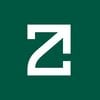Product Designer Jobs in Web3
660 jobs found
| Job Position | Company | Posted | Location | Salary | Tags |
|---|---|---|---|---|---|
Crypto.com | Hong Kong, Hong Kong | $58k - $90k | |||
Crypto.com | Hong Kong, Hong Kong | $58k - $90k | |||
Confusion Capital | Remote | $180k - $220k | |||
Stellar | Remote | $190k - $230k | |||
| Learn job-ready web3 skills on your schedule with 1-on-1 support & get a job, or your money back. | | by Metana Bootcamp Info | |||
Copperco | Remote | $86k - $117k | |||
Gate.io | APAC | $81k - $84k | |||
Boost Studios | Remote |
| |||
Crypto.news | Remote | $84k - $113k | |||
𝚝𝟷 | Remote | $86k - $100k | |||
Cbreferral | Remote | $175k - $206k | |||
Coinbase | Remote | $91k - $118k | |||
Coinbase | Remote | $58k - $90k | |||
Coinbase | Remote | $58k - $90k | |||
ZetaChain | Remote |
| |||
xLabs | Remote | $87k - $120k |
Product Designer (Fiat)
Key Responsibilities
- Think of this role as more than just pushing pixels. We're looking for a design partner who sees every interface as an opportunity to make complex financial interactions feel effortless. You'll be:
- Designing seamless experiences for users to move between traditional currency and crypto assets
- Creating intuitive flows for multi-currency accounts and global money transfers
- Collaborating with our UK-based product team to define and refine our fiat product strategy
- Building user-friendly interfaces for yield-earning features
- Ensuring consistent experience across our global fiat on/off ramp solutions
- Translating complex financial concepts into clear, approachable user interfaces
Ideal Candidate You are someone who:
- Approaches unfamiliar territory with excitement and a learning mindset
- Has a natural curiosity about how money moves in the digital age
- Can break down complex systems into understandable user flows
- Views design as a tool for financial inclusion and accessibility
- Builds bridges between user needs and technical constraints
Your intellectual toolkit goes beyond technical skills. You are:
- A quick learner who can rapidly understand new financial concepts and technologies
- Comfortable working with ambiguity and evolving product requirements
- Skilled at facilitating collaborative design discussions across different time zones
- Driven by the impact of making financial services more accessible
- Able to balance user needs with regulatory requirements and technical constraints
Specific Skills Required:
- Design
- Proven mastery of end-to-end product design process, from user research and wireframing to high-fidelity prototypes and design systems
- Expert proficiency in Figma for interface design, prototyping, and maintaining design systems
- Strong experience with responsive web design principles and mobile-first approaches
- Demonstrated ability to create and maintain comprehensive design systems and component libraries
- Proficiency in designing data-heavy interfaces and complex financial workflows
- Research
- Experience conducting user research, usability testing, and translating findings into actionable design improvements
- Ability to analyze qualitative and quantitative data to inform design decisions
- Proficiency with user testing tools like UserTesting, Maze, or similar platforms
- Experience with A/B testing methodologies and analyzing test results
- Tools and Technologies
- Advanced proficiency in Figma and prototyping tools
- Proficiency with design collaboration tools (Figjam, Miro, Jira)
- Familiarity with version control concepts and design version management
- Experience with analytics tools (Google Analytics, Mixpanel, or similar)
- Domain Knowledge
- Understanding of financial products and services, particularly in digital banking or fintech
- Familiarity with cryptocurrency concepts and blockchain technology
- Knowledge of financial regulatory requirements and their impact on UX design
- Experience designing KYC/AML flows and security-conscious interfaces
What does a product designer do?
A product designer is responsible for creating and designing the physical and visual aspects of a product, with the aim of enhancing its functionality, usability, and aesthetics
This involves a broad range of tasks, such as researching and analyzing customer needs, designing user interfaces, creating sketches and prototypes, testing and refining designs, and collaborating with cross-functional teams to ensure the final product meets the intended user needs and business goals
A product designer must have a deep understanding of design principles, materials, manufacturing processes, and technological advancements in order to create products that are both innovative and functional
They must also have excellent communication skills, as they work closely with engineers, marketing teams, and other stakeholders to ensure that the product is developed on time, within budget, and meets the desired quality standards
Product designers work in a variety of industries, such as consumer electronics, furniture, automotive, fashion, and healthcare, to name a few
They may work for large corporations, small businesses, or as freelance designers, and often collaborate with other designers, engineers, and manufacturers to bring their designs to life
In web3, a product designer is responsible for designing and creating decentralized applications (dApps) and other products that leverage blockchain technology, smart contracts, and decentralized networks
This involves understanding the unique technical and functional requirements of web3 products, as well as the principles of decentralization, transparency, and user ownership
Web3 product designers need to be familiar with blockchain technology, smart contract programming languages, and decentralized networks, in order to design products that can operate effectively in a decentralized environment
They need to be able to work with developers and other stakeholders to ensure that the product is designed in a way that maximizes user control and ownership, while minimizing the potential for fraud or malicious activity
Web3 product designers may work on a range of products, such as decentralized finance (DeFi) platforms, non-fungible token (NFT) marketplaces, decentralized social networks, and more
They may also work closely with blockchain developers, economists, and other specialists to create products that are both innovative and practical, while maintaining a strong focus on user experience.

